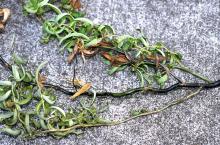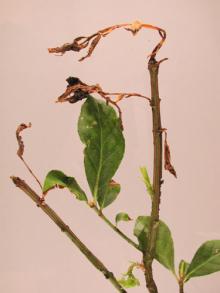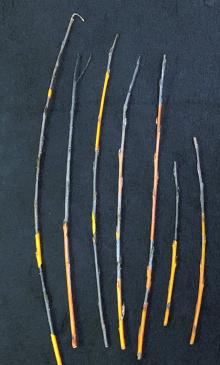See:
Lilac (Syringa spp.) - Bacterial Blight
Cause Pseudomonas syringae pv. syringae, a bacterium that overwinters in twig and branch cankers. Although the bacteria survive on the outside of the plant they must get inside and multiply in the space between plant cells (apoplast) to cause disease. These pathogenic bacteria inject several proteins and small-molecule toxins to get past host immune mechanisms. Once inside, the bacteria induce a watery, nutrient rich environment between the plant cells where they can multiply and continue colonization of the plant tissues. Bacteria also produce a protein that acts as an ice nucleus, increasing frost wounds that bacteria easily colonize and expand. The bacteria are ubiquitous and easily found on healthy tissues.
Symptoms Blighted twigs and branches die back, and leaves turn brown and wilt. Brown streaks occur in sections of affected wood. Severe defoliation may occur. Cankers with longitudinal cracks have also been reported.
Cultural control
- Cut out affected twigs and branches if practical.
Chemical control Make applications in fall after leaves drop to protect leaf scars.
- Badge X2 at 1.5 to 2 lb/A. Group M1 fungicide. 48-hr reentry. O
- Bordeaux 8-8-100. Group M1 fungicide. O
- CuPRO 5000 at 1.5 to 5 lb/A but only up to 2 lb/A when new growth is present. Group M1 fungicide. 48-hr reentry.
- Junction at 1.5 to 3.5 lb/A. Group M1 + M3 fungicide. 48-hr reentry.
Reference Ramstedt, M., Astrom, B. and von Fricks, H.A. 1994. Dieback of poplar and willow caused by Pseudomonas syringae in combination with freezing stress. European Journal of Forest Pathology 24:305-315.




